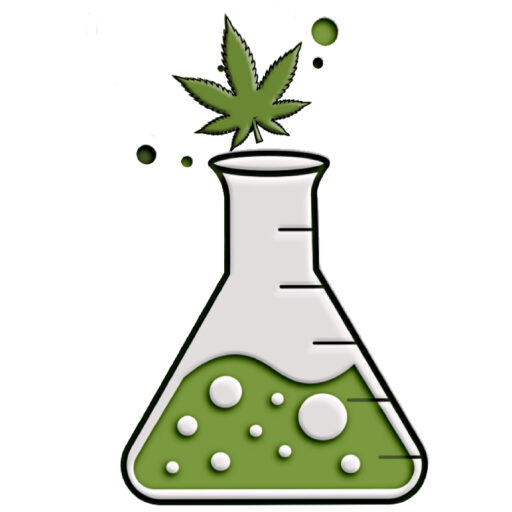Weed for beginners is not a new phenomenon. However, the use of marijuana among middle-aged, middle-class individuals is becoming more mainstream than ever before. Some parents often choose to have a quiet bong hit rather than a usual glass of wine. Cannabis is legal in some form in 24 US states, so many families now see its use as normal. Even more states are set to legalize its use.
Table of Contents
In many US states, recreational cannabis is legal, bringing significant tax revenue that benefits public services like schools. For instance, public schools in Colorado have seen substantial funding, thanks to regulated dispensaries that maintain strict property rules. This ensures that neighbourhoods remain attractive and valuable, dispelling any negative stereotypes of marijuana users.
You may have noticed that more parents are open about their weed usage. They’re not different from any other parents; they simply choose a different way to relax. There’s no reason to feel out of place or uncertain. All around you, many are educating themselves and enjoying the benefits of cannabis responsibly.
For newcomers, here are a few tips:
- Decide What to Try: Depending on where you live, you may not have so much choice locally, but there are many online options to buy from. Do you want to vape, or eat edibles?
- Start Low: Begin with a low dosage and gradually increase it to find your comfort level.
- Choose the Right Strain: Some strains are more suitable for beginners. Consider those advertised as relaxing or for light use.
- Method Matters: Whether it’s edibles, smoking, or vaping, understand that the method of consumption can significantly impact your experience.
Embrace the journey with confidence, knowing you are not alone. Many folk around you are making the same choices and finding that cannabis fits seamlessly into their lives. By exploring and understanding, you’ll soon find what works best for you.
Why Do People Use Cannabis?
Many choose cannabis for its therapeutic benefits with minimal risks. The absence of a link to social or psychological disorders adds to its appeal. For recreational users, avoiding habitual addiction is key.
For others, it is simply a way to unwind and relax. Cannabis has a much better safety record than alcohol does and is not addictive.
For medical purposes, vaporisers, tinctures, and edibles present safer alternatives to smoking, minimising any potential respiratory issues and lung damage.

Indica vs Sativa: What’s the Difference?
When exploring cannabis, understanding the difference between the two varieties is crucial.
Indica varieties are known for their calming effects, often resulting in a “body high.” These tend to be best for evening use and can help with relaxation and sleep. You will become much more aware of your muscles and feel them relax.
Sativa varieties, on the other hand, are recognised for their uplifting and energising qualities. They are typically associated with a “cerebral high” that can aid in enhancing creativity and focus, making them more suitable for daytime use. You may find that your sense of taste, hearing and smell are all enhanced.
Most often though, cannabis plants will be a hybrid of both, but usually strongly lean towards one or the other. Understanding different strains can help tailor your cannabis experience to your preferences.
What Are Cannabinoids?
Cannabinoids are compounds found in the cannabis plant, which can have various effects on the body and mind. Whether you’re smoking weed for the first time or trying medical cannabis for its therapeutic benefits, understanding cannabinoids is crucial.
The endocannabinoid system in our bodies regulates various functions and interacts with cannabinoids when we consume cannabis. There are over 100 different cannabinoids found in cannabis, but the two most well-known and studied cannabinoids are Tetrahydrocannabinol (THC) and Cannabidiol (CBD).
THC is the psychoactive compound in cannabis that produces the feeling of being “high” when consumed. It also has various therapeutic benefits such as pain relief, appetite stimulation, and nausea reduction.
CBD, on the other hand, is non-psychoactive and is known for its therapeutic benefits such as reducing anxiety, inflammation, and seizures. Many people use CBD products for its calming and anti-inflammatory effects without experiencing a high.
Other lesser-known cannabinoids like Cannabinol (CBN), Cannabigerol (CBG), and Tetrahydrocannabivarin (THCV) also have their own unique effects and potential therapeutic benefits.
Understanding Terpenes in Weed
Terpenes are the aromatic compounds found not only in cannabis but also in many other plants. These compounds play a significant role in differentiating the flavours and effects of various strains.
Common ones include Myrcene (which can produce a musky aroma and has sedative properties) and Limonene (known for its citrus scent and mood-enhancing effects). Understanding the different ones can help you choose a variety that aligns with your desired effects and preferences. You can read more about them in this blog 14 Top Terpenes in Cannabis and Essential Oils.
How to Use Cannabis for the First Time
Vaping vs Smoking Weed
You can smoke weed as a joint, blunt, pipe, or bong. Each method offers its own experience and convenience. Vaporisers are considered a healthier option as they reduce lung damage by avoiding nicotine. They also give you a very quick effect. There are several types of vaporisers.
- Some use combustion, so the weed is burned. This means that the weed is used up all at one time. It can also give a harsh smoke as the smoke is hot.
- Others use conduction where a heated container is used. This is usually a cooler vape, but it still uses up all the weed in one session.
- I prefer the convection type where heated air passes over the cannabis, so it doesn’t burn at all. This gives a much cooler, smoother vaping experience. If you only take a couple of hits and then turn it off, you can use the same weed again later. The ones I like allow you to set specific temperatures so that you can choose which terpenes are released.
How Cannabis Edibles Work
These are a popular choice due to their long-lasting effects. These can come in various forms, such as brownies, gummies, or drinks. Always start with a small dose as they take longer to kick in.
If you have bought them commercially, you will know the potential strength of them. Be wary if someone gives you a cannabis cookie they have made as you may not know just how strong it is.
With edibles, expect about an hour or so before you start to notice anything. After that, the feeling gets gradually stronger and can last for several hours. In case you are worried, no-one has died from too much cannabis in an edible, although I suggest not to go online shopping while high! Once you’re comfortable with the basics, you might enjoy exploring some beginner-friendly cannabis recipes to enhance your experience.
You might want to get a CBD spray or drops before you use cannabis. If your high is getting a little stronger than you were ready for, a few drops or sprays of CBD under your tongue takes the edge off very quickly.

Using Cannabis Skincare Products
Cannabis can also be integrated into skincare products. These items can include creams, oils, and balms infused with cannabis, offering anti-inflammatory and antioxidant benefits that are applied topically. Check out this FREE recipe to Make Cannabis Lotion at Home.
Again, these are not as fast as inhaling and offer a different experience to edibles. If the products are made up with strains that have specific terpenic profiles such as Humulene and Caryophyllene, they can be very useful for localised pain control. They can also be used for microdosing throughout the day.
FAQ
What is the difference between weed, cannabis, and marijuana?
Weed, cannabis, and marijuana all refer to the same plant. “Weed” is slang, while “cannabis” and “marijuana” are more formal terms. Hemp is a form of cannabis that doesn’t get you high. You can read more in this blog Hemp Oil vs CBD Oil – What’s The Difference?
How do I choose the right cannabis strain as a beginner?
Start with a mild strain that’s recommended for relaxation or daytime use. Ask for beginner-friendly options at your dispensary or check strain reviews online.
What are the different ways to consume weed for beginners?
You can smoke, vape, or eat edibles. Vaping gives fast effects, edibles last longer, and smoking is the most common. Choose the method that suits your comfort and lifestyle.
How should beginners approach using cannabis for the first time?
Start with a low dose, wait to feel the effects, and go slow. Have water nearby and avoid mixing with alcohol. A CBD spray can help calm an unexpected high.
What should I know before visiting a dispensary?
Dispensary staff (budtenders) are there to help. Read up on strains and product types beforehand, and don’t be afraid to ask questions about what’s best for a beginner.
Conclusion
Venturing into the world of cannabis can seem daunting, but everyone starts somewhere. With marijuana becoming more mainstream, especially among middle-aged individuals, there’s no need to feel out of place. Legalisation in many states has brought acceptance and benefits like increased funding for public services.
As you begin, remember to:
- Start Low and Go Slow: Begin with a low dosage and gradually increase.
- Choose the Right Strain: Indica for relaxation, Sativa for energy, or hybrids for balance.
- Select Your Method: Pick a method that suits your preferences, whether smoking, vaping, or eating.
Understanding the basics, such as strain differences and the role of terpenes, can enhance your experience. Don’t hesitate to ask questions at a dispensary or do your own research. By staying informed and exploring, you’ll soon discover the many benefits of cannabis, integrating it into your life with confidence and enjoyment. Happy exploring!

If you liked this blog post, I would love it if you shared it with a friend.
If you use Pinterest, please pin this post.
*As a POT by NOIDS affiliate, I earn from qualifying purchases.
*As an Amazon Associate, I earn from qualifying purchases.


